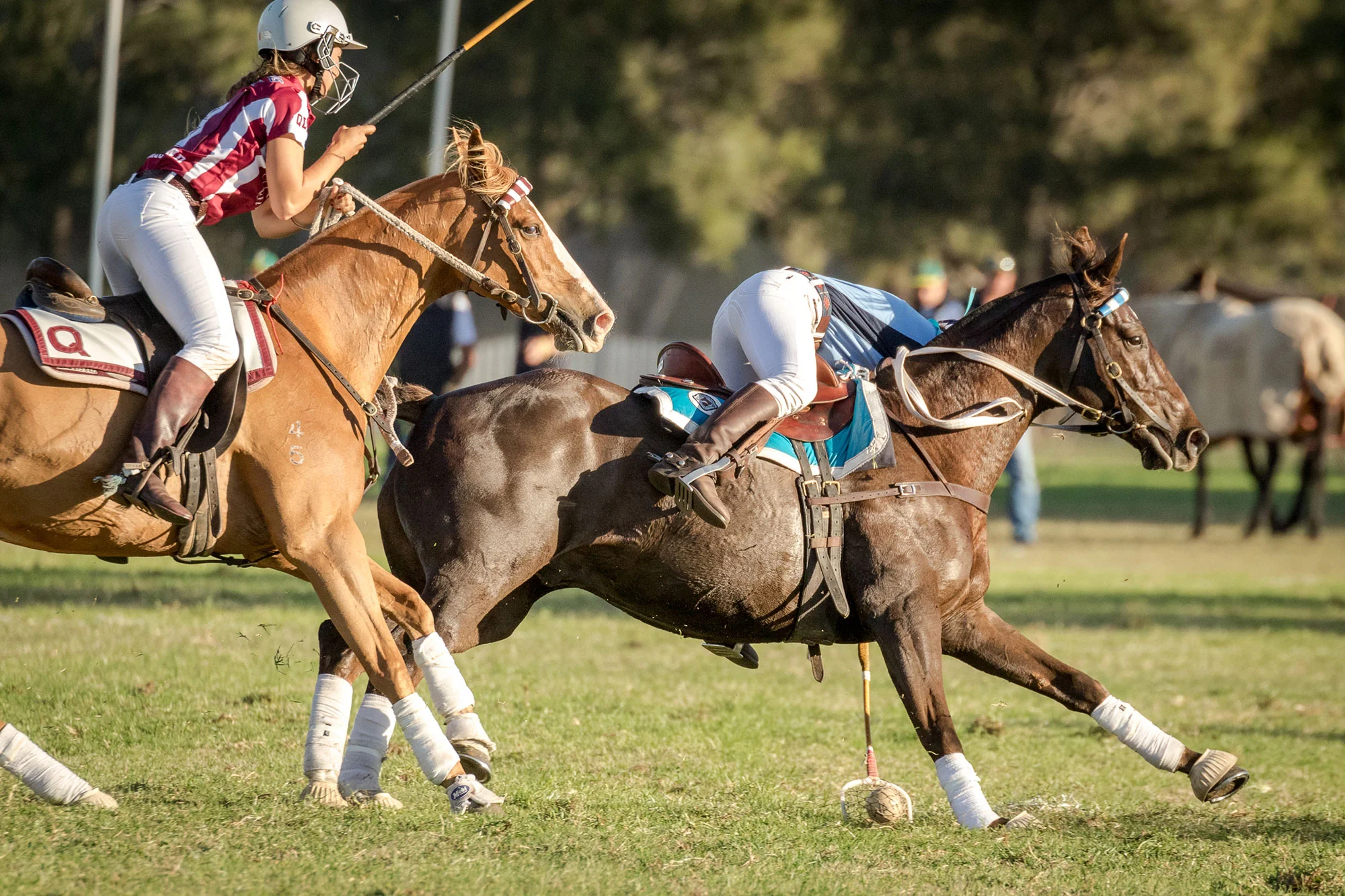The History of the Game
Polocrosse was developed in Australia in 1938 by Mr and Mrs Edward Hirst of Sydney. It was inspired by an indoor exercise they'd seen in England which used old polo sticks with squash racquet heads and a shallow string net to replace the mallet on the end of the stick.
Polocrosse is a combination of polo, lacrosse and netball. It is played on horseback, each rider using a cane stick, made up of a polo stick shaft to which is attached a squash racquet-type head with a loose twisted-thread net in which the ball is carried. The ball is made of thick-skinned sponge rubber and is 100mm-130mm in diameter.
From the outset it was intended to be a game which allowed the inexpensive enjoyment of one’s horse. Hence the rule of 'one horse, one player' and the playing of alternate chukkas. The whole team of six could travel in one cattle truck as petrol was rationed and people did not travel far in 1945. Trains and single floats were also a popular way to transport horses to carnivals during the early days. The first official polocrosse club was formed at Ingleburn, NSW in 1939 with the second club, Burradoo, being formed in 1946 and the first inter-club competition was held.
The game quickly spread, and today there are over 250 clubs throughout Australia. The game is now played in New Zealand, South Africa, Zimbabwe, USA, Canada, England, Ireland, France, The Netherlands, Uruguay, Vanuatu, Denmark, Finland, Mexico and Argentina.
Image 1: Colin Laidlaw and Jack Reilly (L to R) at Stawell 1956
Image 2: Marjory Hirst (with the ball) in late 1930's
Image 3: Jack Reilly on "Soda" and Max Walters on "Sally" at Stawell 1956.




